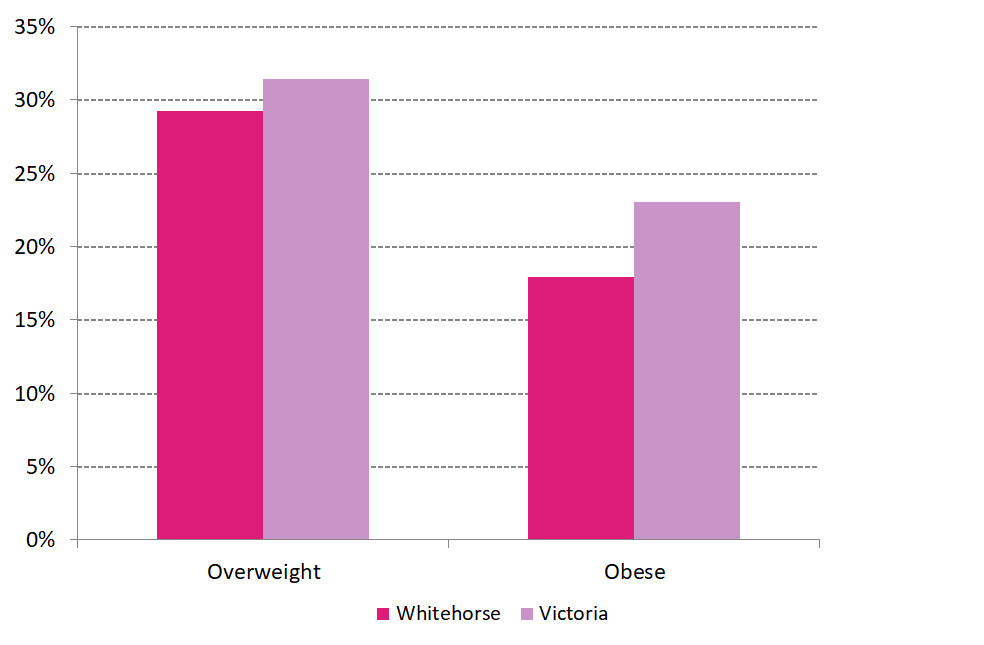This page provides statistical information about a range of social and wellbeing related themes in the City of Whitehorse.
The main data sources for this page are the 2023 Victorian Population Health Survey and the Department of Health 2023 'Community Profile - People and Households'.
Life Expectancy
Life expectancy at birth for male residents in the Inner East of Melbourne was estimated at 85 years and 87.6 years for females (for 2019-2021). The Victorian equivalents were 81.7 and 85.7 years respectively. Whitehorse has experienced higher life expectancy than the State average since the Department of Human Services started collecting data in 1997. Life expectancy has increased over this time.
Self Reported Health
Self-reported health was measured in the 2023 Victorian Population Health Survey. Respondents were asked to rate their health as excellent/very good, good, fair or poor:
- 36.7 per cent of persons living within Whitehorse reported that their health was either excellent or very good. This is lower than Victoria at 39.8 per cent.
- 18.4 per cent of persons reported that their health was fair or poor which was slightly lower compared to Victoria at 20.9 per cent.
Mental Health
In 2023, 14.9 per cent of people in Whitehorse reported experiencing high or very high levels of psychological distress, slightly lower than the Victorian average of 19.1 per cent.
Furthmore, 17.3 per cent of adults in Whitehorse sought professional help for a mental health problem in the past 12 months, compared to 20.1 per cent in Victoria. Women were more likely to have sought professional help (24 per cent) than men (15.1 per cent), with the highest rates observed among younger age groups, 28 per cent for residents aged 18 to 24 and 25 to 34 years.
Smoking

The 2023 Victorian Population Health Survey found that 5.2 per cent of people in Whitehorse identify as daily smokers, significantly lower than the Victorian average of 10 per cent. Overall, 12.2 per cent of Whitehorse residents identified as smokers (including both tobacco and vaping), compared to 18.5 per cent for Victoria. Figure 1 shows the smoking status of residents in Whitehorse compared to those in Victoria.
Alcohol Consumption
The National Health and Medical Research Council provides guidelines to reduce health risks associated with alcohol consumption. To minimise the risk of alcohol-related disease or injury, healthy men and women are advised to consume no more than 10 standard drinks per week and no more than 4 standard drinks on any single day. In Whitehorse, 9.3 per cent of adults were at increased risk of alcohol-related disease or injury in 2023, slightly lower than the Victorian average of 13.1 per cent.
Obesity

Being overweight or obese is an important risk factor for developing type 2 diabetes, cardiovascular disease, hypertension, certain cancers, sleep apnoea and osteoarthritis. It is typically measured by calculating a person’s Body Mass Index (BMI) which is their weight in relation to their height. In 2023, 29.2 per cent of adults in Whitehorse were overweight and 17.9 per cent of adults were obese, compared to the Victorian averages of 31.4 per cent and 23.0 per cent respectively.
Food Insecurity
In 2023, 8.2 per cent of residents in Whitehorse definitely worried about running out of money to buy food in last 12 months. A futher 9.9 sometimes worried about running out of money to buy food. This is slightly lower than the averages for Victoria.
|
No or not often |
Sometimes |
Yes, definitely |
|
|---|---|---|---|
| Whitehorse |
81.9 |
9.9 |
8.2 |
| Victoria |
74.7 |
15.4 |
9.7 |
Physical Activity
Physical activity status was measured in the Victorian Population Health Survey 2023 by identifying adults who are sedentary, undertake insufficient physical activity (<150 min and/or <2 sessions per week), and sufficient physical activity (>150min and >2 sessions per week). In Whitehorse, 31.0 per cent of people undertake sufficient physical activity, slightly less than the Victorian average of 35.1 per cent.
The proportion of adults who spent eight or more hours sitting on an average weekday (during the preceding week) is slightly higher in Whitehorse (33.1 per cent) compared with all Victorian adults (27.9 per cent).
Gambling
As at 30 June 2024, Whitehorse had 431 Electronic Gaming Machines (EGMs) across six venues in the municipality (refer to Table 2). In 2023/24, net expenditure (i.e. losses) on EGMs in the City of Whitehorse totalled $59.6 million, equating to $432 per adult. Whitehorse recorded the ninth-highest losses per EGM in Victoria and the second-largest increase in losses compared to the Victorian average, with an increase of 6.3 per cent or $3.55 million. Two gaming venues in Whitehorse ranked among the top ten venues across the state with the largest increases in losses: the Box Hill RSL, with an increase of $2.34 million from the previous year (ranked fifth), and the Chase Hotel, with an increase of $2.04 million from the previous year (ranked eighth).
| Venue | Suburb | EGMs | Venue Type | Expenditure 2023-2024 |
|---|---|---|---|---|
| Blackburn Hotel | Blackburn | 66 | Hotel | $8,304,638 |
| Box Hill Golf | Box Hill | 39 | Club | $2,947,076 |
| Box Hill RSL | Box Hill | 103 | Club | $11,598,683 |
| Burvale Hotel | Nunawading | 73 | Hotel | $10,093,539 |
| Mitcham Hotel | Mitcham | 60 | Hotel | $6,493,385 |
| The Chase Hotel | Forest Hill | 90 | Hotel | $20,225,010 |
Source: Victorian Gambling & Casino Control Commission (2024), ‘Monthly LGA EGM Statistics’.
Volunteering
Volunteering was measured in the 2021 Census. Respondents were asked if they had volunteered in the previous 12 months. More than 1 in 10 persons in Whitehorse reported they had volunteered (15.5 per cent), compared with 12.1 per cent for Victoria.
Links
For more information about health and wellbeing please refer to:








